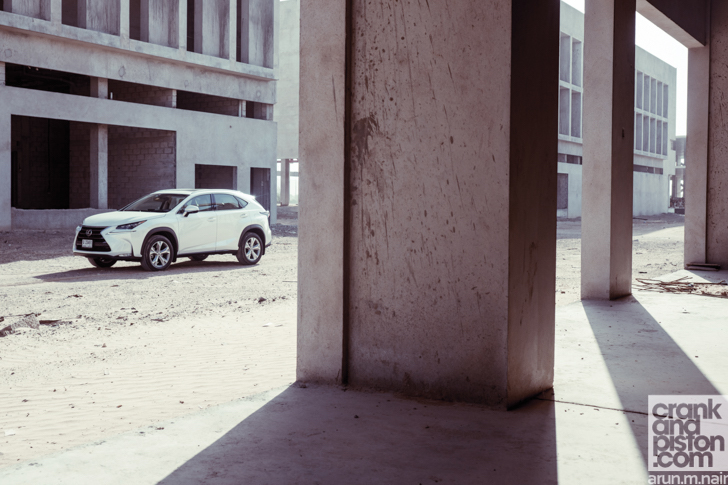No, it’s not a concept car but a genuine production model. Does the spirit of IS-F and LFA live on?
| Engine | Power | Torque | 0-100kph | Top speed | Weight | Price |
|---|---|---|---|---|---|---|
| V6, 3500cc | 354hp @ 6,600rmp | 256lb ft @ 4,900rpm | 4.7sec | 250kph | 2217kg | $96,510 |
As the epitome of reliability, subdued refinement and exemplary customer service, Lexus is the Far Eastern alternative to the German luxury benchmarks. However, from time to time, the company goes against type and gives birth to unruly children that avoid showers, like to jump into puddles and ‘forget’ to hand in their homework.
To this exclusive cadre belong the bad boy IS-F that was launched a decade ago, the current GS-F, the RC-F and the iconic LFA. Our guess, then, is that F stands for fast because each of them is just that. And, standing on the shoulders of the latter, the new LC500h comes to entertain and it does so in unmistakable style. In canary yellow (Flare Yellow, apparently) it immediately evokes the image of the LFA – undeniably striking and quite beautiful.
The long-since departed LFA’s sleek front design has given way to the now signature, oversized front grille that so many manufacturers have embraced, but it keeps the general headlight angles and longitudinal lines of its forebear. While the design team has evidently been busy coming up with attractive details, it’s worth pointing out that the hybrid LC500’s eye-catching body sits on some very clever engineering developments that allow it to maintain an impressively low centre of gravity. That flamboyant styling serves a purpose, with plenty in the way of trick aerodynamics and, as well as being a head-turner, its underbody engineering is remarkable. The LC500h has plenty to brag about in the face of some stiff competition.
It all starts with a newly designed chassis that pushes the wheels towards the extremities of the car, opening up space to lower the engine mount and allowing room for the über-complicated transmission (more on that later). This new configuration provides a wheelbase that extends to a substantial 2.87 metres, which is on par with Merc’s E-Class and Lexus’ own GS. These dimensions require rigidity, which the LC achieves with a combination of steel construction, aluminum for the bonnet and boot and carbon strengthening on the doors.
Despite the best efforts of Lexus, the LC500h weighs 2,217kg, which shockingly puts it right within Range Rover territory. This heavy waistline is somewhat masked thanks to the aforementioned low centre of gravity, a very efficient double joint multilink suspension and the 245/45 & 275/35 R21 Bridgestone tyres. But, unfortunately, it is felt at every turn’s exit and through the frantic gear-changes that even the slightest throttle input provokes.
The driving experience is, therefore, sedated and somewhat numb, the electric steering paying no justice to an otherwise great suspension. Drivetrain wise, Lexus has deployed a rather complex transmission system that combines the electric motor and a CVT gearbox. It has four set ratios on the CVT and three extra gears on the electric motor coupling, offering a total of 10 ratios. The result is not particularly inspiring, as no matter what you do, the internal computer will perform various situational analysis and play around between gears for half a second before sending you on your way. Thus the power is, frustratingly, never actually there when you need it.
That said, in manual mode, with the traction control off while driving on a winding road with limited grip, it can be an extremely fun car, the long wheelbase allowing heroic drifting feats in a predictable and entertaining way. Until you realize, that is, that the traction control is not really off, and that it reconnects itself beyond about 70kph.
On the other hand, the engine is a 3.5-litre V6, naturally aspirated and 24-valve delight that revs up to 6,600rpm and delivers 354bhp when combined with the two electric motors and through the ‘Multi Stage Hybrid System’. Lexus has optimised the use of electricity on this model to increase the range the motors contribute to the power delivery, while increasing its zero-emissions capability up to an impressive 140kph.
Published fuel consumption figures claim a 6.7L/100km average, which I think could be achieved if you decided to ‘drive Miss Daisy’ or just go downhill all the time. Our numbers went close to the 12-litre mark using a, let’s say, happy-go-lucky driving style and, while this seems high by today’s standards, for a lively, two and a half ton, performance coupe, aren’t all that bad. Clearly, then, the hybrid configuration pays off when it comes to real world consumption.
Going back to the styling, another area the LC500 excels is in the interior – sporty but plush, with a paranoid attention to detail and enough gadgets to satisfy the quirkiest of minds. There are no analogue dials and the information to hand is both useful and pristinely presented. It should be noted, though, that the trackpad on the central console can be a major distraction to the driver and, while there is a laudably clean design with a lack of nasty looking buttons on the dash, using it to switch off the seat ventilation requires navigating three separate menu screens and takes 15 seconds to complete. You shouldn’t need to faff about with this sort of stuff while on the move.
The cockpit and the driving position are, it has to be said, exceptional, offering more than enough headroom for taller occupants and ease of access to every control. That’s for front occupants only, mind, as the rear ‘seats’ are little more than leather upholstered shelves. For a coupe, rear visibility is very good and access to dead angles very easy, while the traction control/drive mode selectors deserve a mention, appearing like alien antennae on the sides of the dashboard – really cool. And, as you’d expect from Lexus, the LC500 is loaded with safety systems, although park assist is conspicuous by its absence here.
In conclusion, then, this is a fantastic new addition to the Lexus stable. It looks great and performs reasonably well for a luxury coupe. Aesthetically it’s astonishing and a true head-turner but it’s no performance icon. For that we must wait on the arrival of that no doubt scorching F model, which is rumoured to be showing up two years from now with 600 combined horses at its disposal. That should be much more like it.



